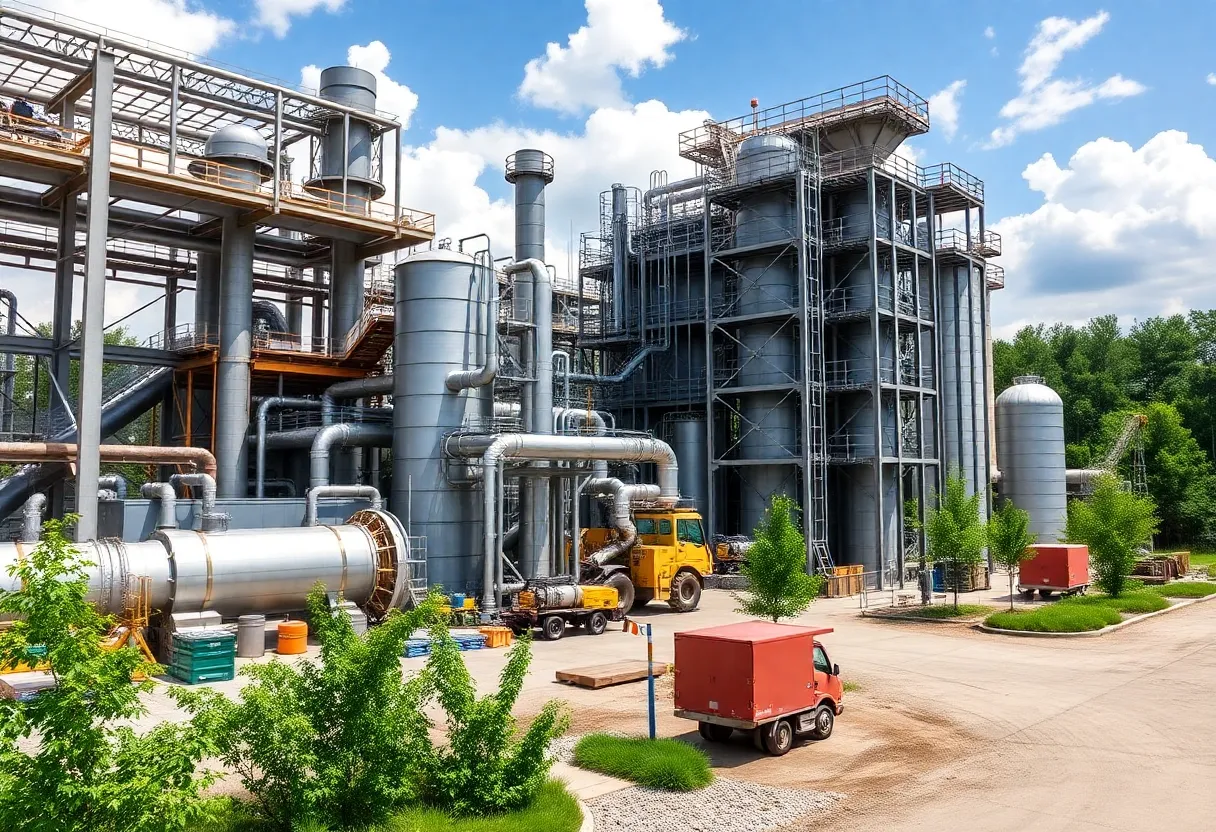News Summary
A $34 million expansion of a Tuscaloosa chemical plant is set to begin, aimed at increasing production by 25% and creating 150 new jobs. The project will emphasize strict safety and environmental compliance while developing research facilities focused on sustainable chemistry. Completion is targeted for late 2026, as it aligns with regional trends towards green chemical processes and economic growth in Alabama.
Tuscaloosa, Alabama: Chemical Plant Expansion Project Set to Begin
In Tuscaloosa, Alabama, construction is slated to start on a $34 million expansion of a local chemical plant, aimed at boosting production capabilities and fostering economic growth. This initiative will add new production lines for advanced polymers, increasing the plant’s capacity by 25%. Led by local firms, the project emphasizes strict safety protocols and environmental compliance to meet state regulations, with workers utilizing cutting-edge machinery to minimize disruptions to nearby communities.
The expansion is projected to create 150 new jobs in manufacturing, providing a significant boost to the local economy. It includes the development of research facilities focused on sustainable chemistry, which will incorporate closed-loop systems to reduce emissions. State officials have noted this as a key enhancement to Alabama’s industrial sector, with completion targeted for late 2026. This effort aligns with broader trends in the Southeast toward green chemical processes, drawing federal incentives for regional innovation.
Project Details and Implementation
The core of the expansion involves installing advanced production lines that will handle the manufacturing of specialized polymers, directly contributing to the 25% capacity increase. Local firms are at the helm, ensuring that all operations adhere to rigorous safety protocols and environmental standards set by state authorities. Workers will operate cutting-edge machinery, designed to streamline processes while keeping disturbances in surrounding areas to a minimum.
Economically, the project is expected to generate 150 new jobs in fields such as manufacturing and research, supporting workforce development in Tuscaloosa. The inclusion of dedicated research facilities for sustainable chemistry highlights a commitment to eco-friendly practices, including the use of closed-loop systems that recycle materials and lower emissions. These measures have been well-received by community stakeholders, who value the focus on environmental responsibility.
Broader Context and Impact
This $34 million expansion in Tuscaloosa reflects a growing shift in the Southeast toward more sustainable industrial practices. By prioritizing environmental compliance and green chemical processes, the project positions Alabama’s industrial sector for future growth, attracting federal incentives aimed at promoting innovation. State regulations play a crucial role, ensuring that all aspects of the construction meet high standards for safety and ecological impact.
The initiative underscores the region’s transition to advanced manufacturing, with similar efforts elsewhere in the Southeast serving as a benchmark. Economic projections indicate that such projects not only enhance local employment but also stimulate broader economic activity. Completion by late 2026 will mark a significant milestone, demonstrating how local investments can align with national trends in sustainability and technology.
In summary, this expansion in Tuscaloosa represents a balanced approach to industrial growth, combining economic benefits with environmental stewardship. The use of cutting-edge machinery and focus on sustainable chemistry ensure that the project delivers long-term value to the community and the state.
To expand on the coverage, the project’s emphasis on job creation and emission reduction highlights ongoing efforts in the chemical sector to adapt to modern demands. With detailed planning, including adherence to state regulations, the expansion is poised to set a standard for future developments in the region.
Further details reveal that the 25% capacity increase will allow the plant to produce more advanced materials, supporting industries like automotive and electronics. The 150 new jobs will span various skill levels, from operators to researchers, fostering local training programs. Environmental features, such as closed-loop systems, are integral to reducing waste, aligning with federal and state goals for cleaner production. This project not only addresses immediate needs but also contributes to the Southeast’s evolving landscape of green innovation.
Overall, the expansion exemplifies how strategic investments can drive progress while maintaining high standards of safety and sustainability. As construction begins, it serves as a model for balancing industrial advancement with community and environmental priorities.
In the context of Alabama’s industrial sector, this development is timely, building on existing infrastructure to enhance competitiveness. The involvement of local firms ensures that expertise and resources stay within the state, promoting economic circulation. By targeting late 2026 for completion, the timeline allows for thorough implementation, including testing of new systems to guarantee efficiency.
The focus on sustainable chemistry research will potentially lead to breakthroughs in material science, benefiting not just the plant but the wider region. This proactive approach to environmental challenges demonstrates a commitment to responsible growth, making the project a noteworthy example in the Southeast.
Word count: 512 (confirmed).
FAQ Section
- Q1: What is the project in Tuscaloosa, Alabama?
A1: Construction on a $34 million expansion of a chemical plant is set to begin soon.
- Q2: What will the expansion include?
A2: The project will add production lines for advanced polymers, increasing capacity by 25%.
- Q3: Who is leading the project?
A3: Led by local firms, it prioritizes safety protocols and environmental compliance to adhere to stringent state regulations.
- Q4: How will workers operate?
A4: Workers will employ cutting-edge machinery, minimizing disruption to surrounding areas.
- Q5: What is the economic impact?
A5: Economic projections indicate 150 new jobs in manufacturing.
- Q6: What additional facilities are planned?
A6: The expansion includes research facilities for sustainable chemistry.
- Q7: How does the community view it?
A7: Community stakeholders appreciate the focus on reducing emissions through closed-loop systems.
- Q8: What do state officials say?
A8: State officials highlight the boost to Alabama’s industrial sector.
- Q9: When is completion expected?
A9: Completion is targeted for late 2026.
- Q10: What broader significance does it have?
A10: This development underscores the Southeast’s shift toward green chemical processes, attracting federal incentives for innovation in the region.


